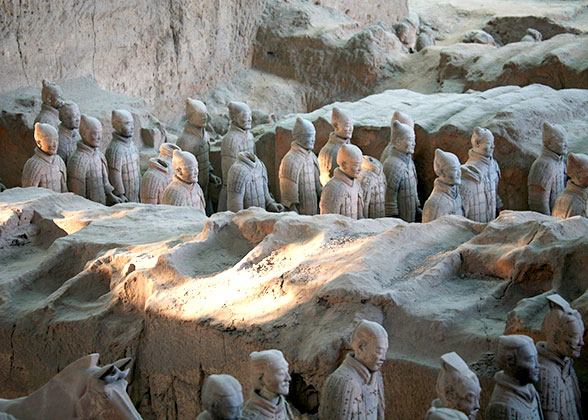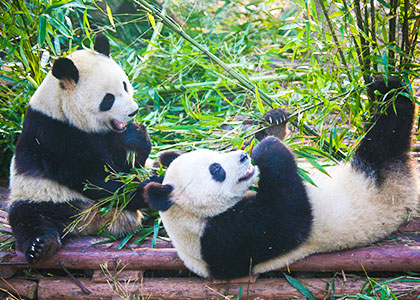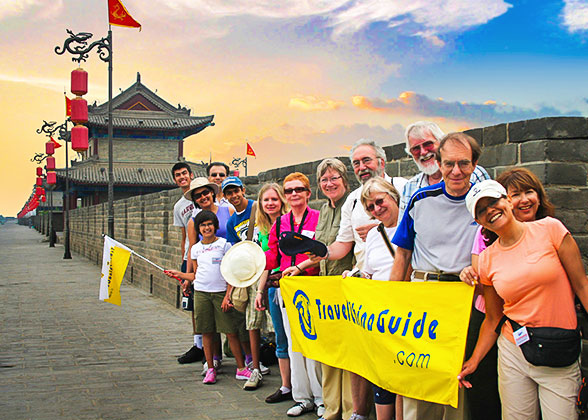No. 1 Exhibition Hall is located on the first floor of the
and consists of three units. It chronologically presents artifacts from prehistoric human ancestors through the Western Zhou and Qin Dynasties, vividly portraying Chinese development history.
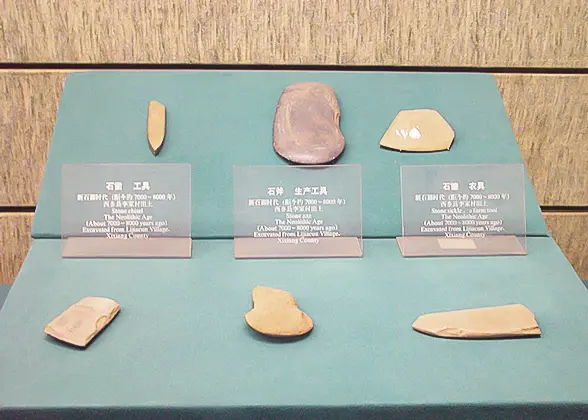 | | Stone Tools from Prehistoric Times | | 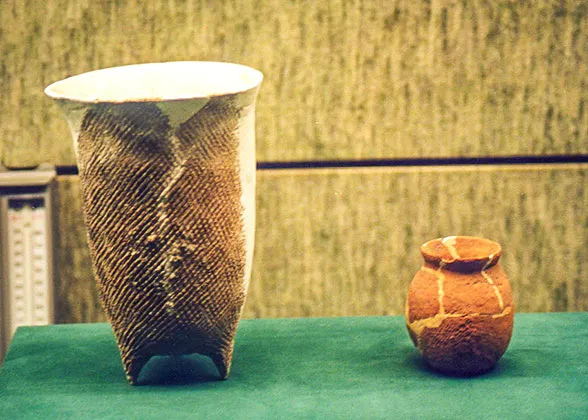 | | Painted Potteries | |
Stepping into Unit 1 feels like traveling back to ancient times. On display here is the fossilized skull of the Lantian Man, dating back approximately 1.15 million years. Also featured are exquisitely crafted painted pottery pieces from the Neolithic Yangshao (5000 BC - 3000 BC) and Longshan (2500 BC - 2000 BC) cultures. Remarkably, these were created using a special oxidizing flame-firing technique. Despite thousands of years of weathering, their colors remain vivid, testifying to the wisdom and craftsmanship of ancient humans. In addition, there are some stone tools such as choppers, scrapers and points. Although the production technology of these tools is simple, it shows that the people one million years ago had already learned the basic production and use of tools.
1. Restored Head Sculpture of Lantian Man
The Head Sculpture of Lantian Man is the only ape-man skull fossil in China. It has a low and flat forehead and thick brow ridges, resembling an ape. The skull fossil of Lantian Man shows that its brain capacity was about 780 ml, which is smaller than that of modern humans but much larger than that of earlier Australopithecus. This suggests the Lantian Man possessed a high level of intelligence, capable of making and using tools and adapting to complex environments.
2. Pottery Basin with Human Mask and Fish Pattern
It belongs to the early Neolithic period and was the lid of a child's jar coffin, as well as a specially made burial vessel. This painted pottery basin is 16.8 cm (6.6 inches) high and has a diameter of 42 cm (16.5 inches). It is made of fine red clay and has two symmetrical patterns of human faces and fish painted in black on the inner wall, representing a masterpiece of Neolithic painted pottery.
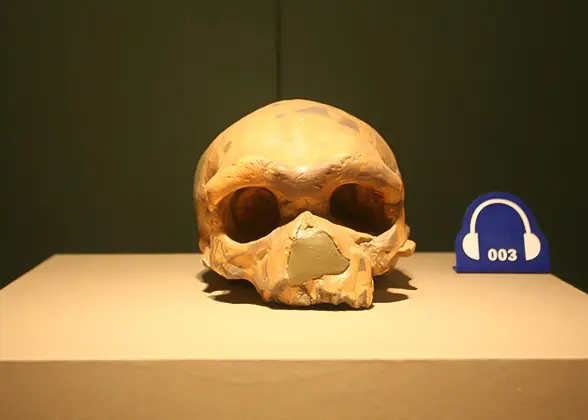 | | Skull of People in Prehistoric Times | | 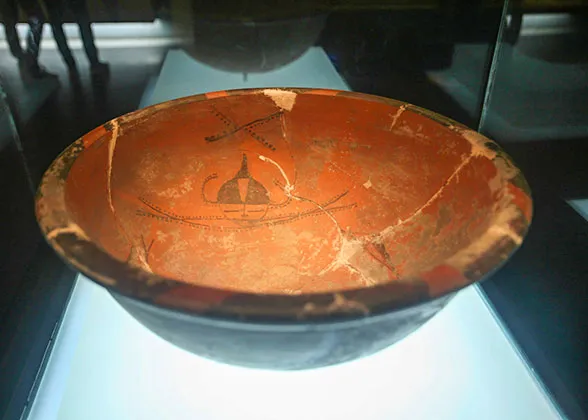 | | Pottery Basin with Human Mask and Fish Pattern | |
 Relics of Prehistoric Times
Relics of Prehistoric Times Known as the “Bronze Age,” the Western Zhou Dynasty saw widespread use and development of bronze wares, which played a pivotal role in contemporary society, including tools, weapons, ritual vessels, and cooking utensils. The craftsmanship of bronze wares also reached a relatively high level. Notably, most of the bronze wares from the Western Zhou period were inscribed with characters for record-keeping, and each bronze ware had a unique story background. In this unit, visitors can view a diverse array of bronze artifacts, from large chime bells to small tripods, each unique in its own right.
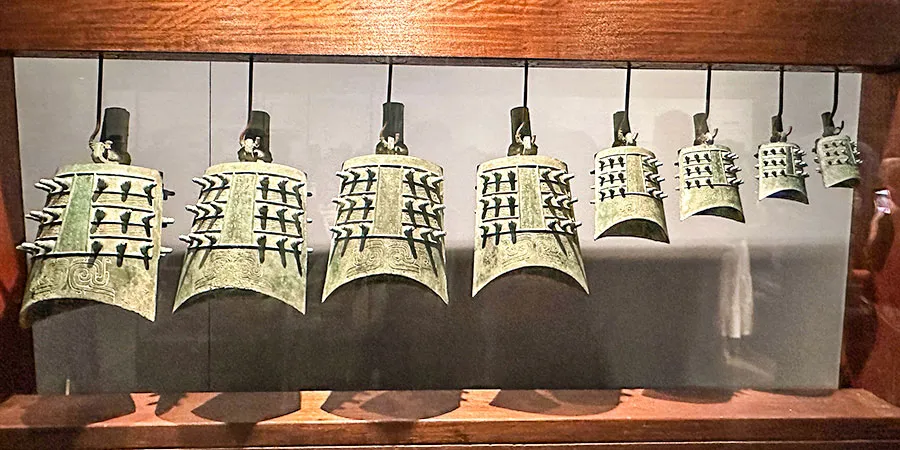 |
| Bronze Chime Bells |
1. Tripod (Ding) of Yu; Cauldron
Inheriting the style of round tripods from the Shang Dynasty (1600 BC - 1046 BC), it is heavy and solemn in design, with exquisitely detailed patterns. The beast-face patterns adorn the area below the rim, set against a background of thunder patterns. The inscriptions on its inner wall are crucial for studying the land system in the early Western Zhou Dynasty, possessing precious historical and artistic value.
2. “Fifth-Year” Tripod (Ding) of Wei; Cauldron
This bronze tripod features 207 characters cast on its inner wall, documenting a land transaction event during the Western Zhou period. Due to its clear dating, it accurately reflects the bronze casting techniques of the Western Zhou period and is extremely precious.
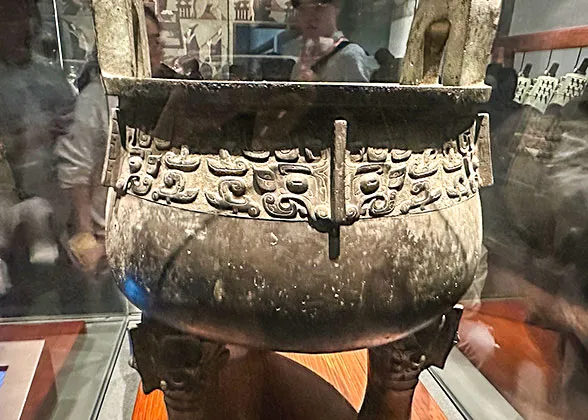 | | Tripod (Ding) of Yu; Cauldron | | 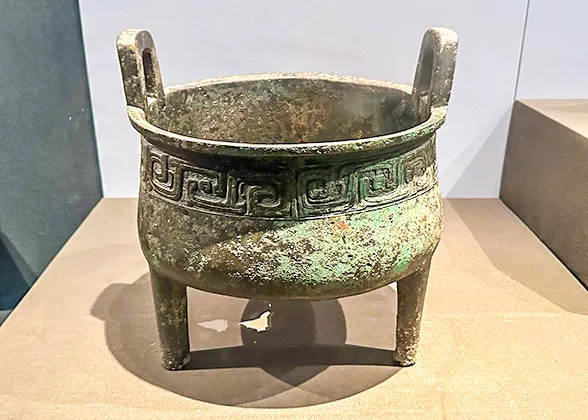 | | “Fifth-Year” Tripod (Ding) of Wei; Cauldron | |
3. Bronze Tripod with Inscriptions “Duo You”
Hemispherical in shape, it has a relatively deep belly and hoof-shaped feet. Its decorative patterns are simple, with only two bands of string patterns on the upper part of the belly. The inner wall of it contains over 270 characters of inscriptions, ranking it among the Shaanxi-unearthed bronze wares with the most inscriptions.
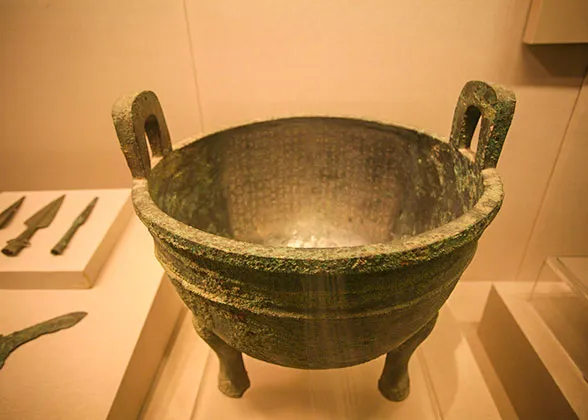 | | Bronze Tripod with Inscriptions “Duo You” | | 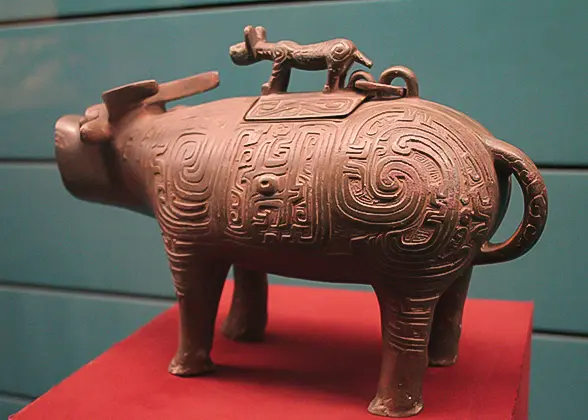 | | Ancient Drinking Vessel Niu Zun | |
 Relics of Shang & Western Zhou Dynasties
Relics of Shang & Western Zhou DynastiesThe Qin Dynasty marked China’s first unified empire. During Emperor Qinshihuang’s reign, the military was extraordinarily powerful, boasting the world’s strongest army and finest generals. In this unit, visitors can observe swords and other weapons used by the Qin army, as well as life-sized terracotta warriors replicated according to real soldiers’ appearances, as if a battle from over 2,000 years ago were unfolding before their eyes. Additionally, Emperor Qinshihuang standardized Chinese characters, currency, and weights and measures. This unit displays various currencies, characters, and measuring instruments from the period before and after the Qin Dynasty’s establishment.
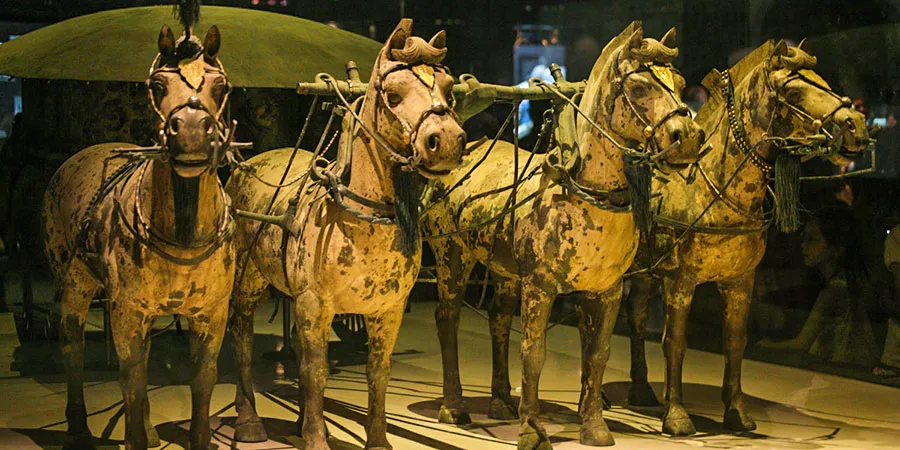 |
| Bronze Chariots and Horses of Emperor Qin Shihuang's Mausoleum |
1. Kneeling Archer Figure
The kneeling archer, dressed in a battle robe and wearing armor, has a bun on the left side of his head. Its left leg is bent, and its right knee is on the ground. With hands placed on the right side of the body, it appears ready to shoot, representing one of the well-preserved Terracotta Army figures.
2. Tiger-Shaped Tally of Du
The Tiger-Shaped Tally of Du is the left half of the token. The tiger is depicted in a walking posture, with its head raised and its tail curled. The left half was held by military officers, while the right half was held by the emperor. The back of both halves of the tiger token usually had unique structures and engravings. Only when they matched exactly could the two halves fit perfectly, ensuring the accurate transmission of military orders.
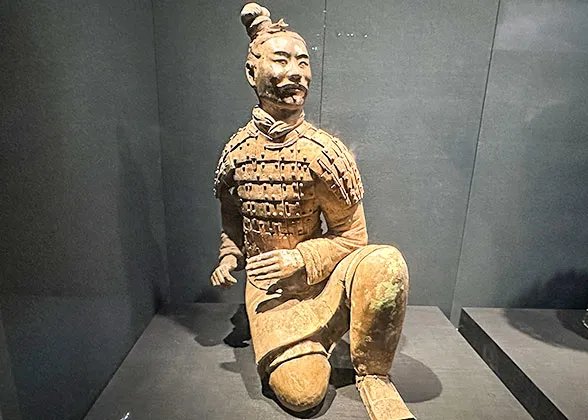 | | Kneeling Archer Figure | | 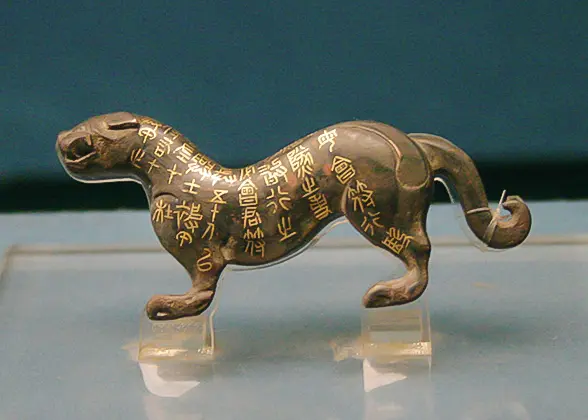 | | Tiger-Shaped Tally for Generals | |
3. Bronze Square Measure
It’s a bronze vessel used for measuring the quantity of crops. One volume can hold approximately 0.2 kilograms of rice. Over 2,000 years ago, when there were no precise weighing devices, people had already created accurate measuring instruments through their ingenuity.
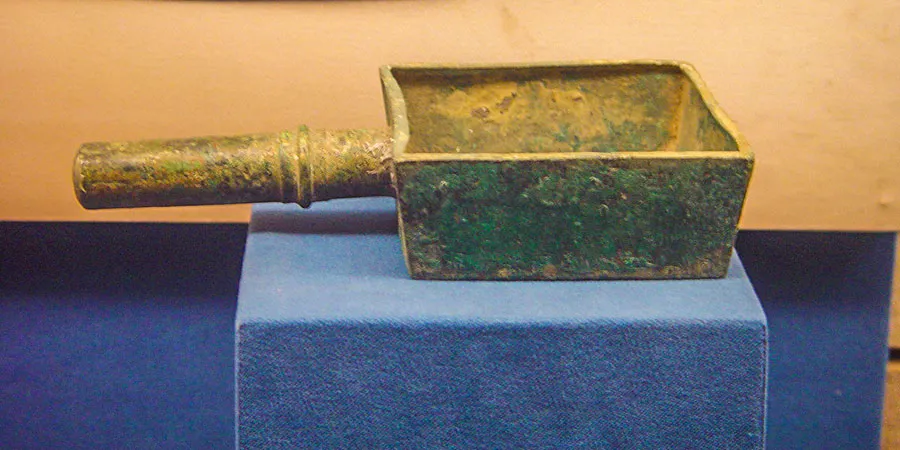 |
| Bronze Square Measure |
 Relics of Eastern Zhou and Qin Dynasties
Relics of Eastern Zhou and Qin DynastiesGo to the No. 2 Exhibition Hall
- Last updated on Dec. 25, 2025 by Sherry Xia -














